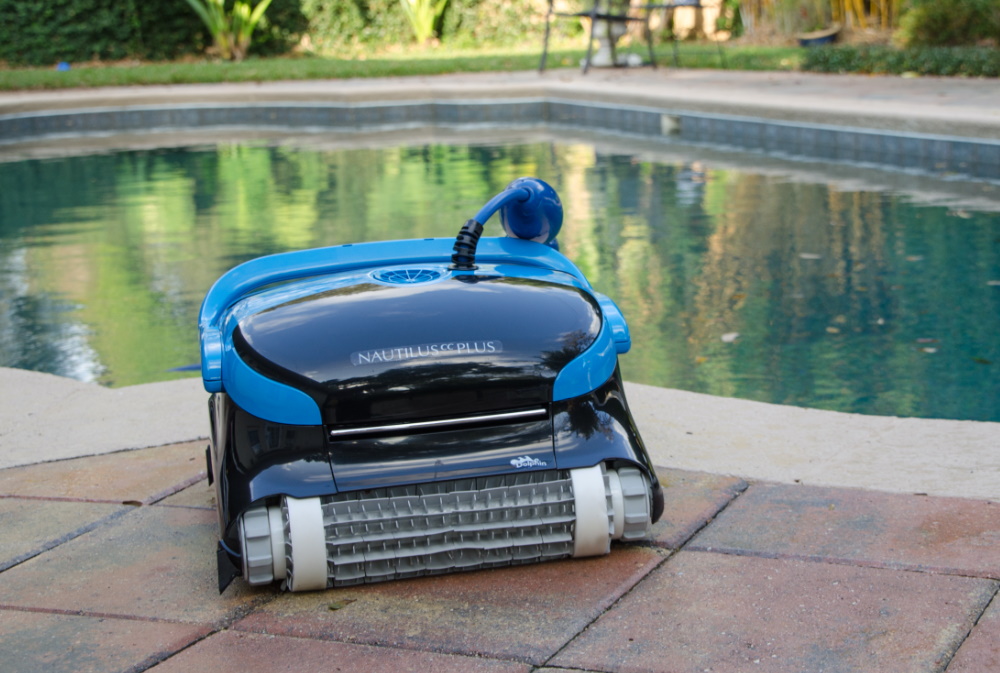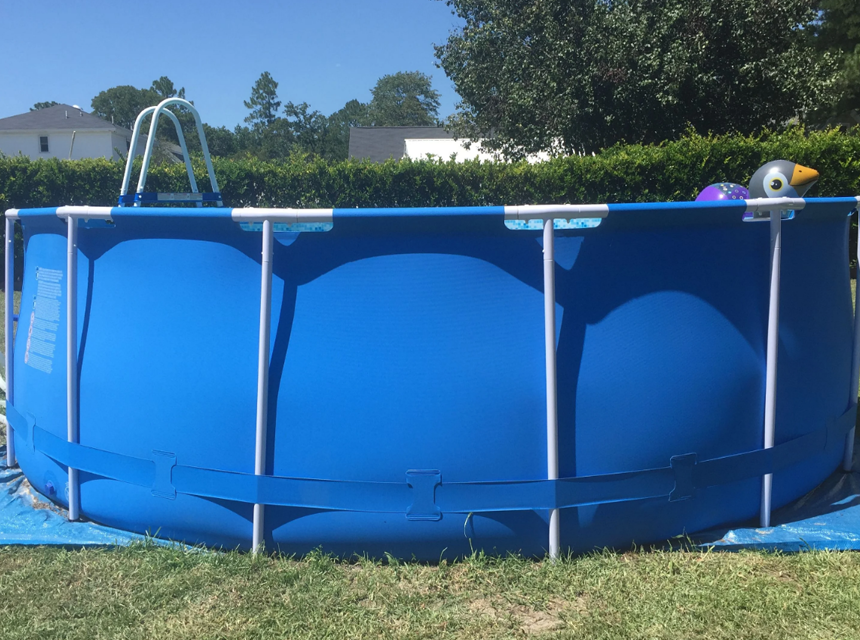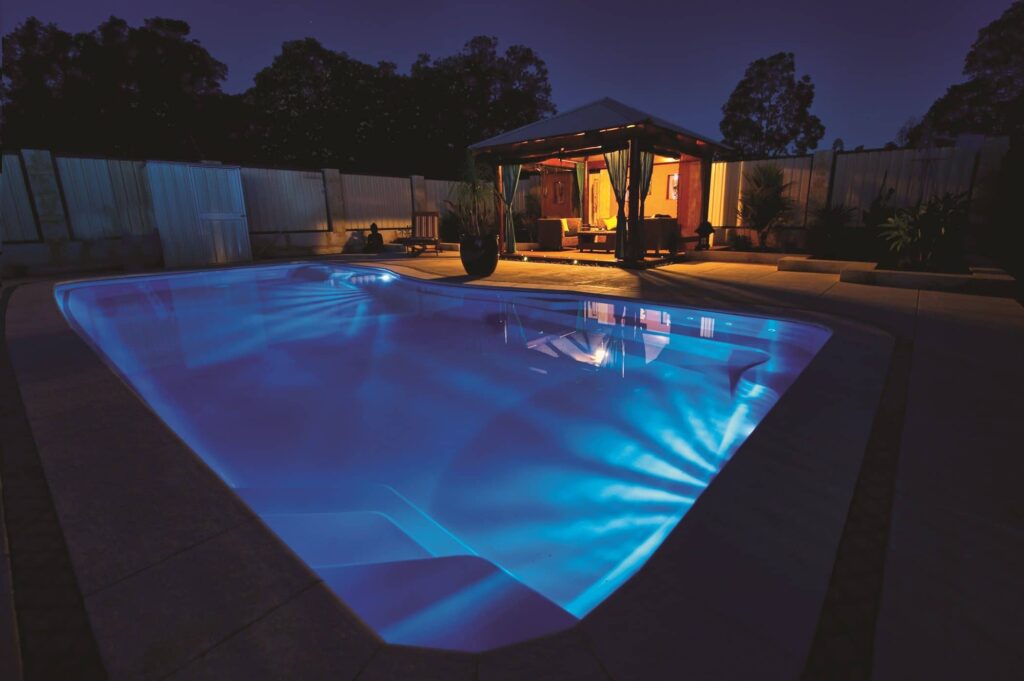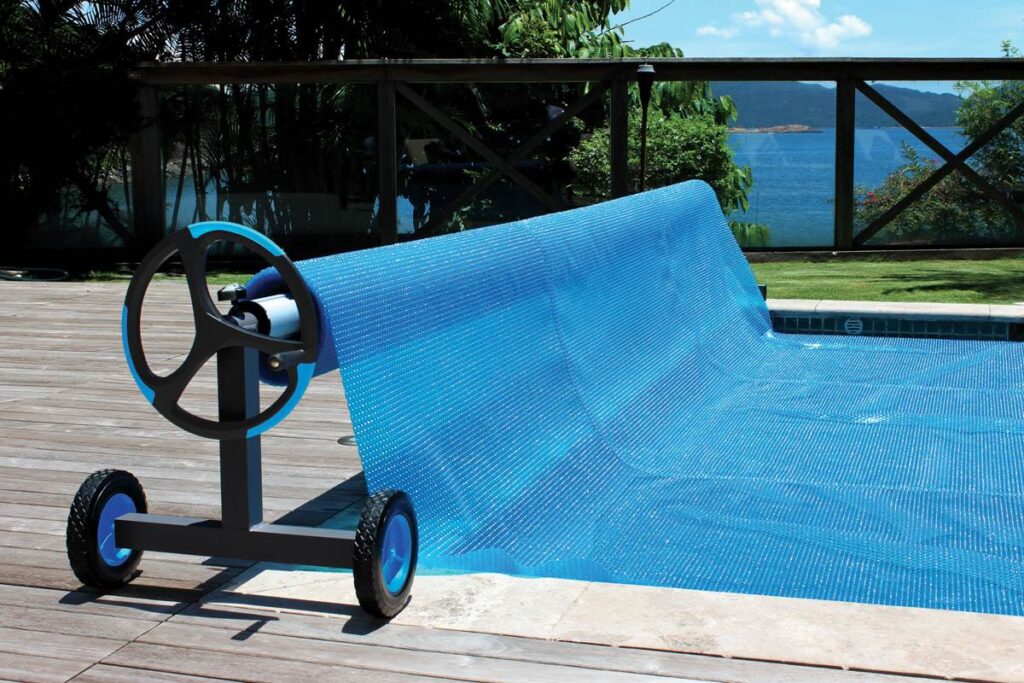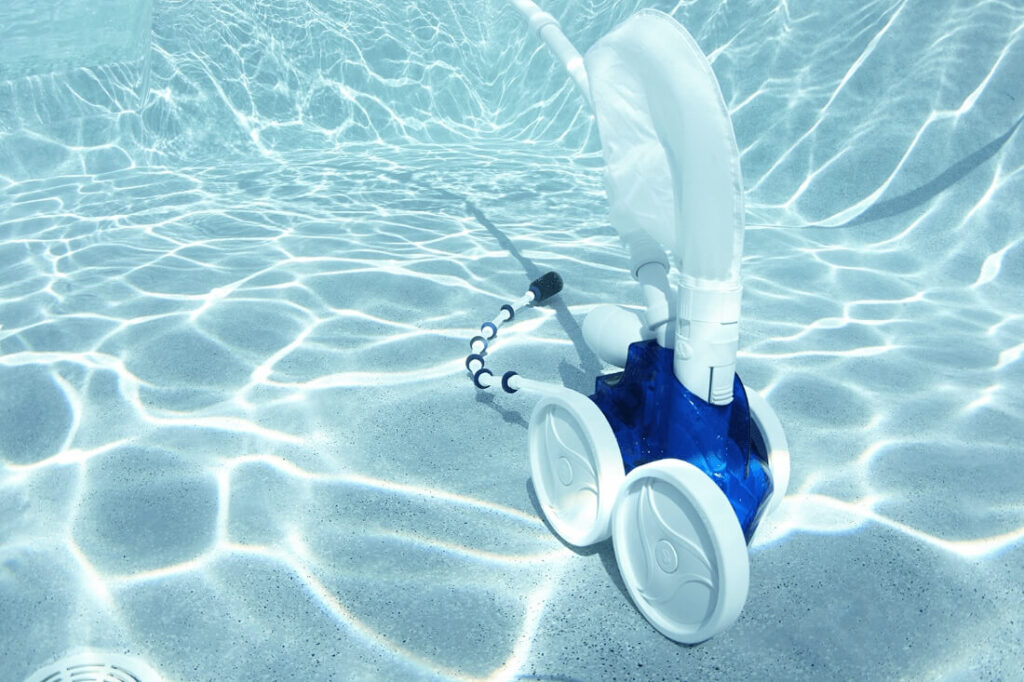Pool maintenance can be grueling as it involves so much, from plumbing and keeping the walls clean to balancing its chemistry. Balancing a pool’s chemistry, basically is balancing its chlorine levels. Having the optimum chlorine levels in your pool is vital for your health and safety. A pool with high levels of chlorine can have various health implications like irritant dermatitis, respiratory illnesses and eye-irritation. The symptoms are mainly caused by the high acidity levels in an over-chlorinated pool.
Therefore, it is important that you learn how to lower chlorine in a pool as chances of you over-chlorinating your pool unknowingly are high. This, especially happens during the shocking Trusted Source Shock chlorination - Wikipedia Shock chlorination is a process used in many swimming pools, water wells, springs, and other water sources to reduce the bacterial and algal residue in the water. en.wikipedia.org process that involves an excessive addition of chlorine to the pool to rid it of bacteria and other harmful microorganisms. To measure the levels of chlorine in your pool, you can use a DPD or OTA testing kit, or you can check for the natural indicators like dry hair and irritated eyes.
Having a swimming pool with slightly above-normal chlorine levels is okay because it is recommended that you shock your pool every new season you open it. The extra chlorine is meant to eliminate bacteria and algae. If you add more granules of the chlorine because of a miscalculation, or for lack of knowledge, then the pool becomes over-chlorinated. Excess chlorine changes the pH level of the pool. It becomes highly acidic, increasing the risk of certain health implications like:
Prolonged exposure to the excess chlorine vapor on the pool’s surface can cause respiratory problems like asthma. The respiratory tract becomes highly sensitive to chlorine. However, the symptoms usually clear up without any treatment after a few days or weeks.
If you have sensitive skin, there is a high likeliness that you will get irritant dermatitis when exposed to high chlorine levels. It is a rash characterized by raised itchy bumps.
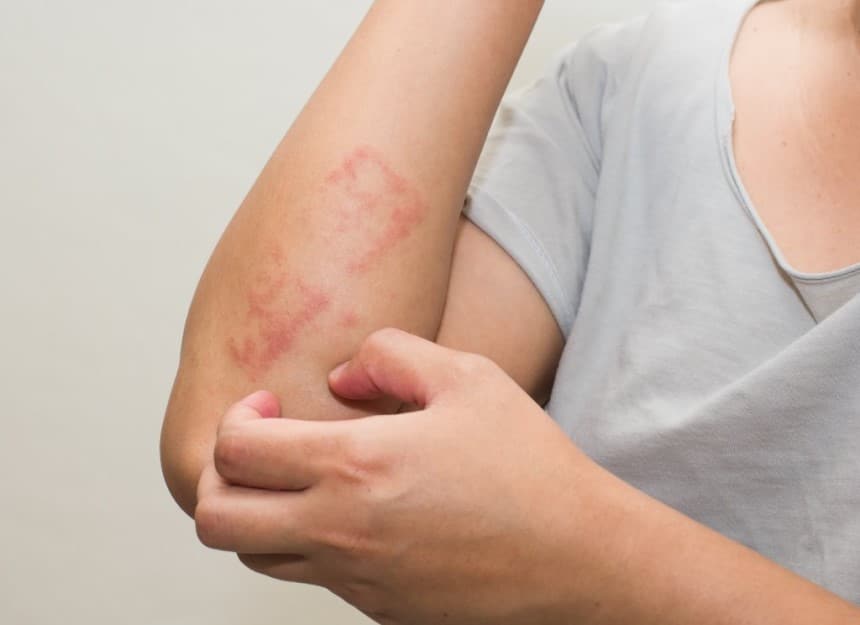 Eye-irritation
Eye-irritationThis is one of the main indicators for high chlorine levels in a pool.
This is rare but it can occur with extreme over-chlorination. You will know you have chlorine poisoning if; you are nauseous or vomiting, coughing persistently, breathing shallowly or wheezing, feeling dizzy and a burning sensation in the throat.
Besides the health risks, the pH alterations caused by high chlorine levels in your pool can affect chlorine’s effectiveness. A pH too low or too high reduces chlorine’s efficiency. It can also damage the pool’s equipment, swim wear, towels and even the landscaping features. You can test the pH levels of your pool using a simple pH strip test.
Your pool contains 2 major types of chlorine compounds; combined chlorine and free chlorine. Free chlorine is good. It is the compound still available to eliminate bacteria and other microorganisms. Combined chlorine is a combination of chlorine and organic matter in the pool water like bacteria. It is the one behind the popular chlorinated pool smell.
Fun fact: You cannot smell chlorine levels in a pool.
If you swim in an over-chlorinated pool, the moment you step out, you will notice your hair is dry, irritated eyes and skin. This is not the safest way of checking chlorine levels in your pool though. You can use a DPD testing kit to get the free and combined chlorine levels or an OTO kit to get the free chlorine count only. You’d be better off buying an all-inclusive testing kit like the BOSIKE Pool and Hot Tub Test Strips. It is highly recommended by expert reviewers as fast and accurate testing kit that can be used for various applications including; spa, hot tub, bath and swimming pool. The kit is 3-in-1 and you can use it to test chlorine, Bromine, total alkalinity and pH. Plus, you don’t have to break the bank for it.
According to CDC, the best chlorine level for your home pool is between 1 and 3ppm. If it is higher than that, then you need to work to lower it.
There are various methods of lowering chlorine levels in your pool. The method you choose depends on the concentration of chlorine in your pool. Here are some basic tips on how to lower total chlorine in a pool.
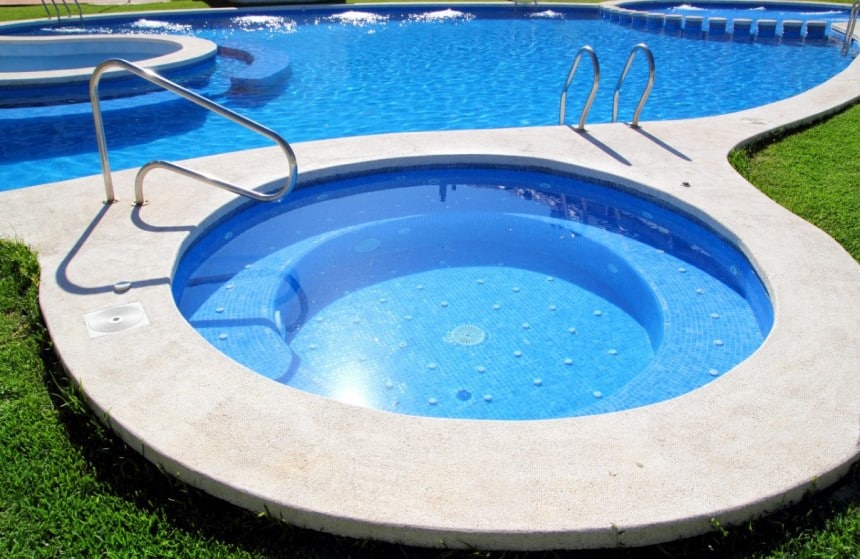
All you have to do with this method is remove all of your chlorine sources then keep monitoring the chlorine levels of the pool to prevent them from falling below 2ppm. At 2ppm, you can resume chlorinating the pool to sanitize it.
This method would not be effective for anyone who uses cyanuric acid which stabilizes chlorine to stay longer in the pool.
If the chlorine level in your pool is slightly higher than recommended, you can simply lower it by stoping chlorination. This is not the method you want to use to lower chlorine and pH levels in a pool after shock. All you have to do is remove all the chlorine sources to stop the continual flow of chlorine into your pool then swim in it. Swimming in the pool will introduce new bacteria and other microorganisms which the excess chlorine will work to eliminate. This will immensely speed up the process of lowering the chlorine levels in the pool.
Before you swim, be sure that; – the pool test you carried out doesn’t have any additional unexpected results like the wrong alkalinity or pH levels. Also, do no swim if you get the strong chlorine smell associated with pools and the pool test showed high chlorine levels. The smell is caused by chloramine which are irritating substances.
The only downside to this method is that the high chlorine levels could cause irritation to some swimmers, especially if they have underlying conditions like respiratory problems. It becomes worse if the pool is located in a poorly ventilated area.
An increase in temperature will affect the pool’s chlorine levels indirectly. Bacteria proliferate in high temperatures. The more the bacteria, the more the chlorine gets used up. If your pool is a heated one, raise the temperature up to 90 degrees F above the normal temperature for a short while. Keep monitoring the chlorine levels of the pool to ensure to get to the optimum level.
Hydrogen peroxide has wide applications, and pool oxidization is one of them. It is sold as a pool chemical oxidizer because it reacts with chlorine to produce water and oxygen.
For high effectiveness, go for hydrogen peroxide made for pools as it has a higher concentration than the regular one used for cleaning purposes. Before adding hydrogen peroxide to your pool, test its pH level as it works effectively at pH levels higher than 7.0. You’ll know its working when you see small effervescent bubbles in the pool.

The amount of neutralizer to use depends on the chlorine levels. Just add it gradually as you check the chlorine levels to ensure that you return the pool to a safe level for swimming. Since a neutralizer sits in the water until it has reacted with all the chlorine available, you could easily remove all the chlorine. It is therefore important that you add it gradually. You can use a pool skimmer to add half of what the manufacturer recommends, then test the chlorine levels to see if you need to add more.
Quick Tip: Ensure you monitor the level of Cyanuric acid and pH if you use stabilized chlorine to sanitize your pool. Any time you use a chemical method to lower the level of chlorine in your pool the cyanuric acid will remain unaltered. If you add more stabilized chlorine afterwards, to resume the pool’s sanitization, the cyanuric acid level increases and consequently increases the pH level of the water.
Draining your pool partially and refilling it with clean water will help dilute your pool water. Compared to all the other chlorine lowering methods, refilling the pool has more cons than pros. It is only great if you have to lower your chlorine levels by 1 to 2ppm.
First off, you water bills will hit the roof, of course this depends on the municipal water rates in your area. Also, it takes more time. Though you can reduce the time by backwashing.
Another downside to this method is that it alters the water hardness and pH levels. Therefore, you must be extra keen on monitoring and readjusting other chemicals in the water after a refill.
On the bright side, refilling the pool is a fantastic option if you have other issues with your pool like a blocked sand filter, an increased level of dissolved solids, excess cyanuric acid, and copper levels.
You don’t have to use chlorine to sanitize your pool. There are a myriad other options that are just as good at preventing bacteria, algae and other micro-organisms from growing and multiplying in your pool.
Using alternative sanitizing products will also help you avoid the risks of over-chlorination. Some of the products include:
This is one of the best water sanitizers you can get to complement chlorine sanitation for your pool. The Natural Chemistry 3121 Pool Perfect Concentrate Pool Water Cleaner is one of the most acclaimed Natural Chemistry pool sanitizing products. It contains enzymes that biodegrade the organic contaminants that build up in your pool. The organic contaminants are broken down to water and carbon dioxide which are easily absorbed by the pool environment.
This is a mineral sanitizer. It uses copper and silver to react with the swimming pool’s water to produce positive ions. The positive ions get rid of any negatively charged organic matter like algae, bacteria or even body oils. The sanitizer features a controlled release technology that optimizes mineral levels in your pool. It works with your pool’s filtration system to not only sanitize your pool but also improve the water’s feel.
This is a pool sanitizer specially formulated to work collaboratively with the chlorine in your pool. It breaks chloramine, and minimizes the need to add more chlorine into the pool. It is also capable of unclogging your pool filters and clearing up the water. As if that’s enough, the formulation is also an algaecide. It eliminates all the existing algae in the water and prevents their growth. The icing on the cake is that it is 100% biodegradable and non-toxic hence the safest for you and your family.
Pool maintenance and a perfectly balanced pool chemistry is vital to having an enjoyable and safe swimming experience. It also helps the pool last long. You could buy the best chlorine tablets for top-notch pool sanitation but what happens if you use too many of them accidentally or out of ignorance? If you own a pool, you just must learn how to lower chlorine levels in a pool. There are various ways to go about it, and we have covered them in great detail.
If you are wondering how to lower chlorine in a salt water pool then start by investing in the best salt-water chlorinator. It is the perfect way to reduce the amount of pool maintenance required and it comes in handy at ensuring you don’t add excess chlorine to your pool water. The Hayward W3AQ-TROL-RJ AquaTrol Above-Ground Pool Salt Chlorination System is the best you can get on the market. It has a user-friendly design that delivers silky smooth sanitized water that doesn’t irritate the eyes, or dry the hair and skin.
